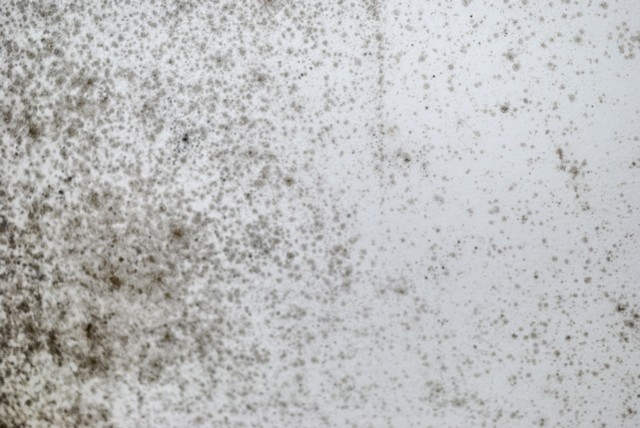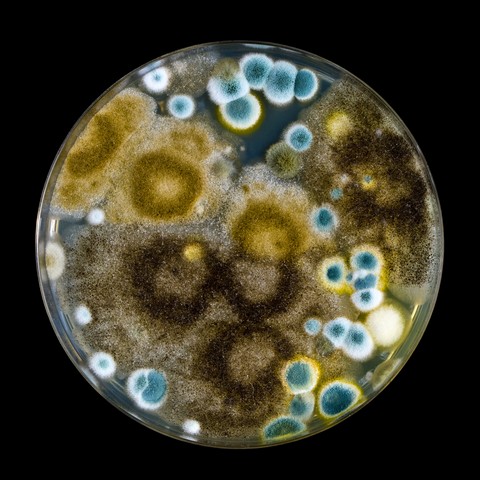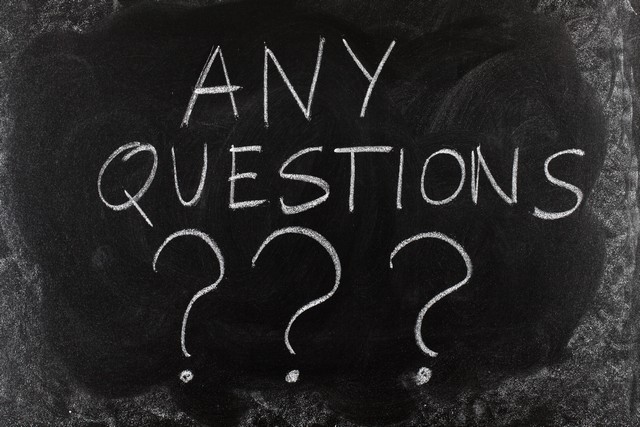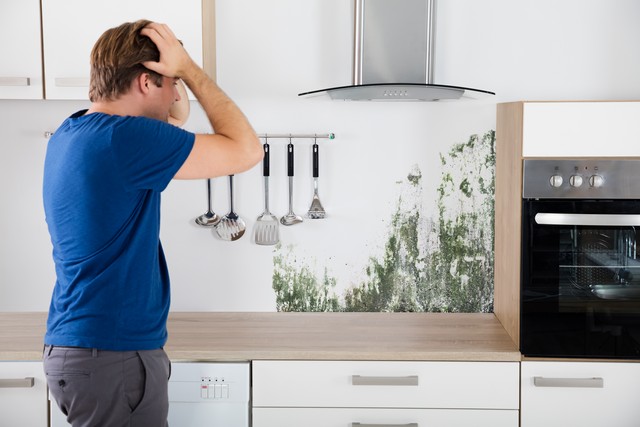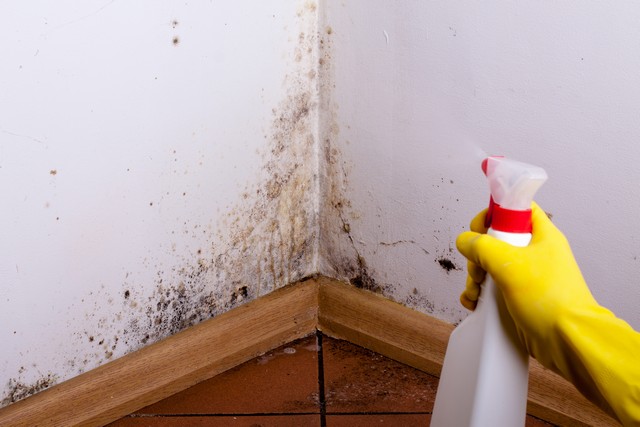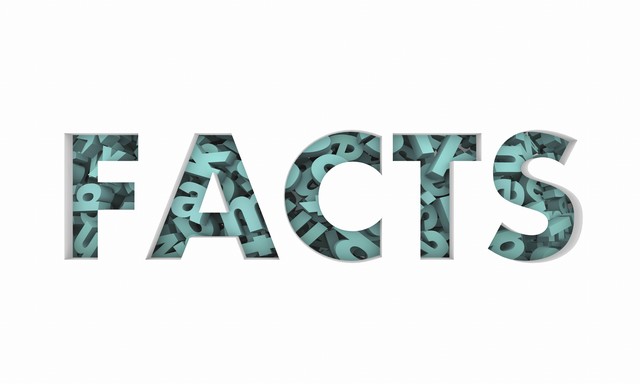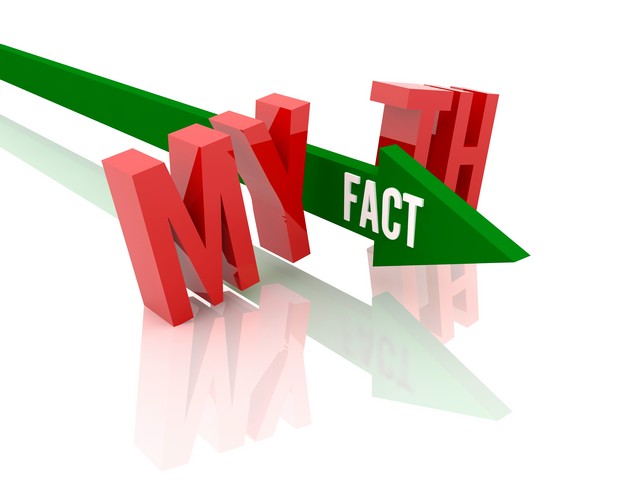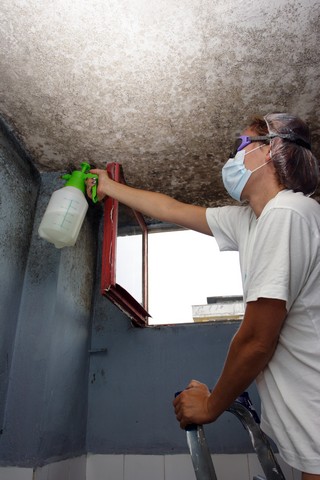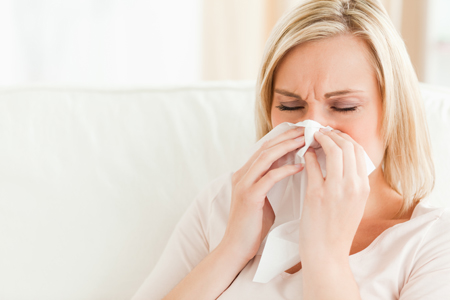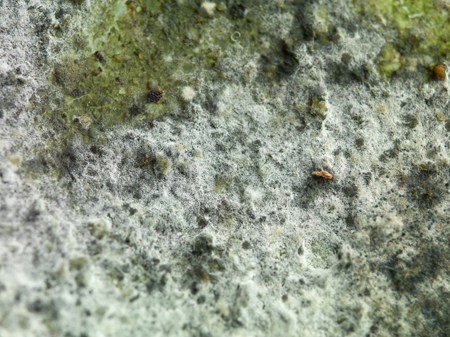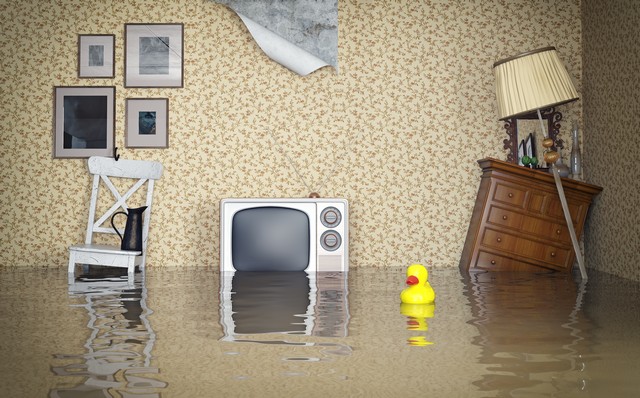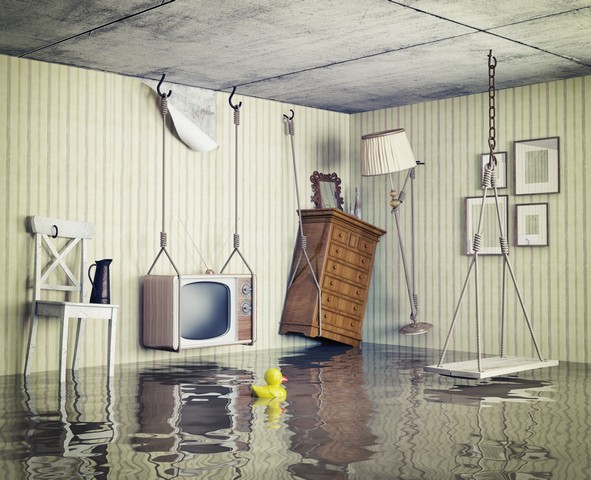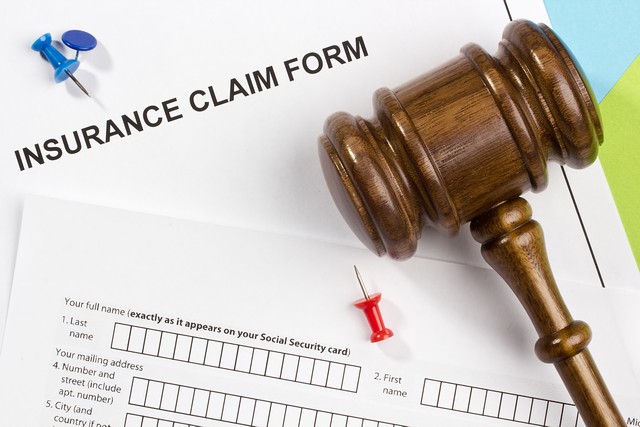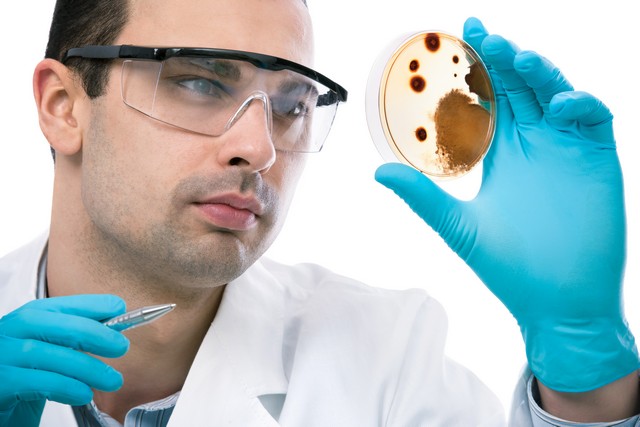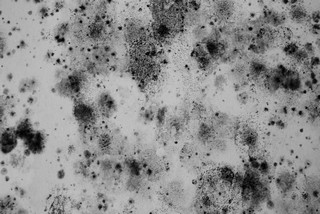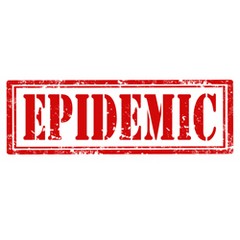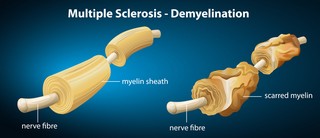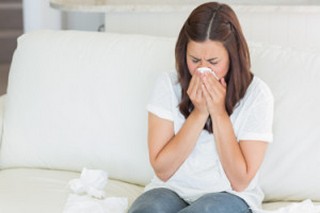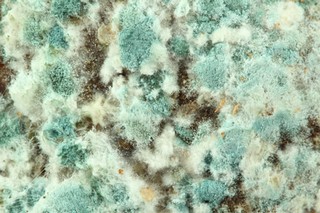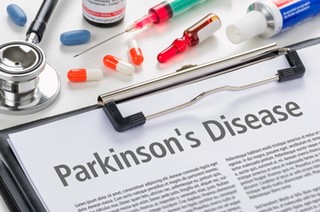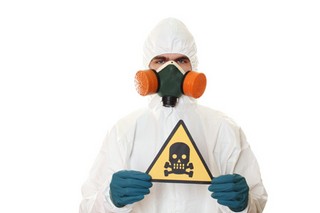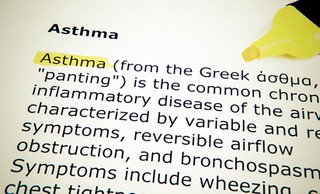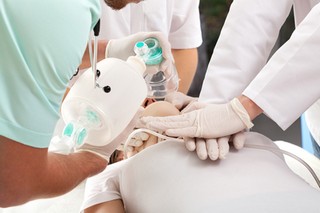
by Eric Brown | Aug 29, 2018 | 37 Symptoms Associated With Mold Illness, black mold removal Atlanta, black mold removal Georgia, Can Black Mold Poison You?, Can Mold Kill?, Commercial Mold Remediation, Commercial Mold Removal, Crawlspace Mold, Health, How Toxic Is Mold?, Indoor Air Quality, Mold Information, Mold Inspection, Mold Remediation, Mold Removal, Mold Removal Alpharetta GA, Mold Removal Atlanta GA, Stachybotrys Black Mold, Toxic Mold
Is Black Mold Dangerous?
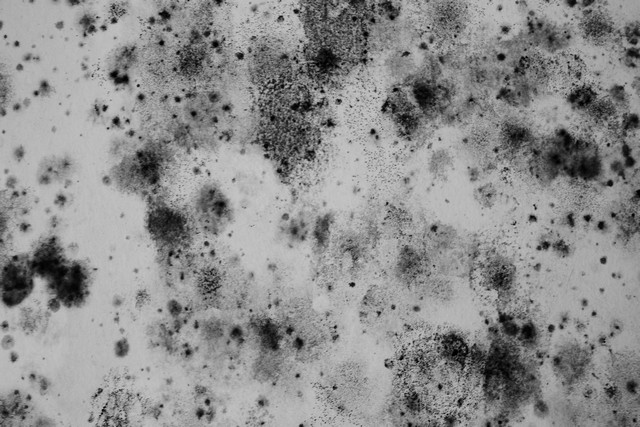
Is Black Mold Dangerous?
Mold B Gone are mold inspection and mold removal experts serving the Atlanta, Georgia area. We have helped 1000s of consumers and business owners with their mold issues using our 8 step mold removal process and eco-friendly chemicals that prevent future mold growth. We are so confident in our mold removal system that we guarantee our work!
One of our goals is to educate consumers about mold through our blog. We are often called by people who are concerned that they may have black mold growing in their homes or businesses. Please don’t panic! We are here to help and are just a phone call away, 470-545-4467!
One of the most common questions we encounter pertains to black mold. The purpose of this article is to explain what black mold is, why it grows, and the potential health consequences of exposure.
What Is Black Mold?

What Is Black Mold?
Stachybotrys molds decay organic matter. The most common species, Stachybotrys chartarum, sometimes referred to as Stachybotrys atra often grows indoors.
Ideal conditions for Stachybotrys growth include moisture, a nutrient/food source, temperature, and time. Ideal humidity for this black mold is a relative humidity of 90% or higher for it to begin the germination growth process. Stachybotrys feeds on materials with a high cellulose content such as hay, straw, wood chips, and building materials such as ceiling tile, drywall, paper vapor barriers, wallpaper, insulation backing, cardboard boxes, and paper files.
Stachybotrys is considered the King of Molds because it will develop into the dominant mold group if the conditions are favorable and will crowd out the other molds that began feeding on the material first.
This happens because unlike other molds like Aspergillus, Penicillium, and Cladosporium which begin growing within one to two days, Stachybotrys takes one to two weeks to begin growing.
Don’t Disturb Black Mold!

Don’t Disturb Black Mold!
When Stachybotrys mold is growing on wet material, the spores do not disperse as easily because the spores are held together by a sticky/slimy coating. However, when the material dries out or is disturbed, the spores will spread through the air.
The main concern of a mold remediation contractor is to prevent the spread of toxic black mold. The most effective method of doing this is through containment, which is the process of creating a poly barrier around the area where the Stachybotrys mold is growing.
This procedure is so important because Stachybotrys spreads by releasing spores. Mold contaminated materials must be removed and disposed of because this mold does not just grow on the surface of the material; it has root-like tendrils called mycelia, meaning it is able to penetrate the surface.
Typically Stachybotry mold grows in clusters at the end of stem-like structures known as hyphae.
Black Mold and Health!

Black Mold and Health!
Stachybotrys produces a mycotoxin (i.e., poison from a fungus) named trichothecenes.
Stachybotrys black mold is a health concern because animal studies have shown that one of the major effects of trichothecenes is immuno-suppression.
In fact, even low level exposure can suppress the immune system resulting in bacterial and viral infections, coughing, skin irritation, and other allergic reactions, and there is some speculation that it may even cause cancer.
Listed below are the top 15 health conditions caused when toxic Stachybotrys black mold is inhaled or ingested:
- Sore/hoarse throat
- Cold and flu symptoms (headaches, slight fever, and muscle aches)
- Nosebleeds
- Tingling or burning of nose, mouth, and perspiration areas (under the arms or between the legs)
- Chronic fatigue
- Dizziness
- Nausea/vomiting
- Memory loss
- Attention deficit/concentration problems
- Personality changes such as irritability or depression
- Neurological disorders such as tremors
- Hair loss
- Coughing with blood
- Bleeding in the lungs (hemosiderosis)
- Damage to internal organs including blood, liver, kidneys, and lungs
Got Black Mold Questions?

Got Black Mold Questions?
If you are concerned that you may have black mold in your home or business that requires removal, call Mold B Gone, 470-545-4467 or send us an e-mail.
Black Mold Summary!
The infographic below, courtesy of the Mold Blogger, provides an excellent summary on black mold and the health symptoms of exposure.

Black Mold Summary!

by Eric Brown | Aug 1, 2018 | Bleach and Mold, Indoor Air Quality, Killing Mold, Mold Information, Mold Remediation, Mold Removal, Mold Removal Alpharetta GA, Mold Removal Atlanta GA
The Myth Of Killing Mold With Bleach!

The Myth Of Killing Mold With Bleach!
The initial instinct when you find mold is usually to reach for a spray bottle and try to kill it with bleach. Our advice, don’t panic and never reach for a bleach bottle, particularly if the mold is on porous materials like drywall. As stated by mold survivor, Christa Upton:
Don’t “kill” or spray mold! Instead, properly remediate it and hire a professional with experience and references that knows what they are doing…. We “killed” mold, sprayed with Lysol, bleached sub-floor and ran fans, replaced carpet but left mold in the sub-floor, walls, etc. Eight months later I was so sick I could not get out of bed….Not one spray has been shown to denature these toxins. Some sprays appear to make toxins worse or more airborne. Humans cannot smell most mold toxins, especially after the mold is “dead.” They are so small that they cannot be seen. They are so tiny that they generally cannot be removed with air purifiers or filters. But they are deadly.
According to Michael Pinto, CEO of Wonder Makers Environmental:
“Killing mold, but leaving the residue in place, is not acceptable. Since many health impacts can be triggered by exposure to both live and dead mold spores, the source and secondary contamination must be removed.” (MOLD INDOORS: Killing it is Not Enough)
One of the problems with the mold is the fact that there is so much bad information on the Internet that recommends that it is safe to try to kill mold. In the case of Christa, this proved to be dangerous to her health.
Unfortunately, because of the lack of regulation in the mold remediation industry, even some contractors believe that killing mold is the answer. Generally speaking, these contractors are poorly trained and really do not understand mold. There is no “quick fix” for mold contamination situations. As a consumer, you need to be cautious about hiring contractors that offer magical solutions that involve just spraying a chemical to kill the mold dead. The purpose of this article is to educate you on mold basics and expand on why killing mold is not the answer.
5 Mold Facts You Need To Be Aware Of!

5 Mold Facts You Need To Be Aware Of!
- Mold thrives when moisture is present. Removing mold without addressing the cause of the problem, ie. identifying the moisture source is not a long term solution. Before any mold removal, the moisture problem must first be found and fixed.
- Exposure to mold spores, both live and dead, and their byproducts like microbial volatile organic compounds (MVOCs), mycotoxins, connecting filaments, etc. can cause illnesses ranging from minor allergic reactions, respiratory problems like asthma and sinusitis, to more serious, life threatening illnesses.
- With respect to health, every individual responds to mold differently. Some people get sick, others don’t. A little bit of mold can make some residents of a property sick, but will not have an impact on others. Research has shown that 25% of the population have a genetic predisposition to mold illness and the condition known as Chronic Inflammatory Response Syndrome (CIRS).
- Mold is a biological agent that will continue to grow as long as the right conditions exist. This is the reason that mold is such a concern because it will continue to thrive and grow unless it is removed and the underlying moisture cause is fixed. In short, ignoring a mold problem will make the situation worse and pose more dangers.
- Contractors trained in mold removal, refer to the process as “remediation” because they have invested in specialized training and equipment and take precautions to prevent the spread of the mold in other parts of the building. Mold remediation specialists will never recommend a “quick fix” because they understand that relying on mold sprays, bleach, biocides, and fungicides are an ineffective “short cut” to mold removal.
The Bleach Myth About Killing Mold!

The Bleach Myth About Killing Mold!
“Perhaps the most misunderstood aspect of bleach when proposed as a cleaner or sanitizing agent is that its effectiveness is greatly reduced in the presence of organic material. To be a successful sanitizer, bleach must be used on clean materials and surfaces. This is why bleach products are used in the laundry after the wash cycle or in a commercial kitchen as a component in the third sink after the dishes have been washed and rinsed. The efficacy of bleach as a sanitizer is also compromised by heat and light. Despite the fact that the chlorine odor may linger for some time after use, bleach loses strength so quickly that it is not considered to have a residual effect that would prevent future bacterial or fungal growth.” (Michael Pinto, Why Restoration Professionals Should Avoid Using Bleach)
One of the benefits of the Internet is it allows anyone to search for a topic of interest and find the information they are looking for.
Unfortunately, with respect to mold removal, the bleach myth is perpetuated on the Internet on countless websites.
Bleach may have some impact on non-porous materials, like bathroom tiles, but bleach is completely ineffective on porous materials:
“If you spray bleach all over your “black toxic mold” you won’t kill every single spore….To kill every single mold spore using bleach, for example, you’d have to use such a high concentration of disinfectant and you’d have to keep it on the surface for so long that more likely you’d damage the structure – and still miss some toxic spores.” (How to Kill Mold – Do We Want to? Is Dead Mold Dangerous?)
Other reasons we do not recommend the use of bleach:
- Bleach does not address the cause of the mold problem!
- Bleach is dangerous!
- Bleach evaporates!
Bleach Does Not Address The Cause Of The Mold Problem!
Experienced mold removal specialists understand that the most effective way to deal with mold is to first find the moisture source and make sure it is fixed.
The next step is to remove the mold contaminated porous materials.
Proper removal of mold contaminated materials like drywall, carpet, soft goods, insulation, and other porous materials is essential because mold has hyphae, which are basically roots that embed themselves in the material.
This is the reason that bleach does not work. Bleach may kill some of the surface mold, but it will not be able to penetrate and kill the roots.
The other reason bleach is a problem is that it is diluted with water. Spraying this is counter-productive because water is an essential ingredient mold needs to grow.
Keep in mind, even if another biocide or fungicide is sprayed on the material, killing the roots, the material will still be contaminated with dead spores. The best course of action to permanently deal with a mold problem on porous materials is to properly dispose of the contaminated material.
Bleach Is Dangerous!
When you are using bleach you should always wear gloves, goggles, and a respirator for three key reasons.
- Bleach is a corrosive that could irritate and damage your skin.
- During the spraying and evaporation process, bleach releases chlorine gas that will impact the eyes and respiratory system.
- One of the by-products of chlorine bleach are dioxins, linked to cancer.
If you intend to use bleach for household cleaning projects, never mix it with other cleaning solutions or detergents that contain ammonia because toxic fumes will be produced.
Bleach Evaporates!
The core ingredient of bleach is chlorine. Over time, chlorine can evaporate and escape through the plastic container. In short, the longer bleach sits, the more ineffective it will become because the chlorine dissipates.
Dead Mold Spores Are Harmful!

Dead Mold Spores Are Harmful
“Even if in theory we could “kill” every spore, the assumption that they are unimportant is highly questionable. “Dead” spores often contain allergens or toxins that are just as harmful to someone breathing them or getting such mold in one’s eye or in a cut, as before….The object is not to “kill” mold, it is – to remove the mold reservoir in the building by physical cleaning or in cases of items that can’t be cleaned, such as drywall, soft goods, carpets, furniture, or insulation, remove the moldy material – to identify the cause and make sure that’s been corrected.” (How to Kill Mold – Do We Want to? Is Dead Mold Dangerous?)
If you have a mold problem, contact Mold B Gone. We are experts at IAQ testing, finding the mold, identifying the moisture source causing the mold, removing the mold, and most importantly, preventing future mold growth using our proprietary mold prevention system chemical line backed by a minimum guarantee of 1 year.
Got Mold Questions?

Got Mold Questions?
Questions? Call 470-545-4467, send us an e-mail, or contact us on FaceBook! We look forward to serving you. 🙂

by Eric Brown | Dec 15, 2017 | black mold removal Atlanta, black mold removal Georgia, Can Mold Kill?, Christmas Tree Mold, Chronic Inflammatory Response Syndrome (CIRS), Health, Homeowner Tips, Mold and Asthma, Mold and Sinusitis, Mold Facts, Questions and Answers
Why Your Christmas Tree Could Be Making You Ill!

Why Your Christmas Tree Could Be Making You Ill!
A newspaper article was published to explain the potential health concerns caused by your Christmas tree: “How CHRISTMAS TREES can cause hay fever hell: Pollen grains, dust and mould can trigger sneezing, coughing and a runny nose”
The article dubbed the illness, Christmas Tree Syndrome, because 1 in 3 (approximately 35 percent) people get sick, suffering from hay fever like symptoms, soon after the Christmas tree is set up in the home.
This article explains what causes Christmas Tree Syndrome and provides recommendations on how you can minimize the potential health issues caused by this indoor air quality issue.
Health Symptoms of Christmas Tree Syndrome!

Health Symptoms of Christmas Tree Syndrome!
Typical signs that your tree is making you ill include the following:
- Asthma attacks, usually triggered by cladosporium mold
- Rhinitis
- Runny nose
- Sinus pain
- Sneezing
- Wheezing
- Coughing
- Cold like symptoms, that subside when away from the home or the room with the tree in it.
Mold Is The Cause Of Christmas Tree Syndrome!

Mold Is The Cause Of Christmas Tree Syndrome!
Prior to the studies documented below, it was thought that tree pollen or even weed killer applied to Christmas trees made people ill.
However, as the studies below conclude, the core cause of Christmas Tree Syndrome is mold, which releases spores and causes allergic reactions:
“Researchers at St. Vincent’s Medical Center in Bridgeport, Connecticut, found that a room containing a fresh Christmas tree for two weeks had mold levels that were five times the normal level. Other studies have shown that levels this high can cause allergic rhinitis and asthma symptoms, says the study’s coauthor, allergist and immunologist Philip Hemmers.” (A fresh Christmas tree for two weeks had mold levels that were five times the normal level)
In another study Dr. John Santilli, compared the level of mold spores in the home before and after the tree was placed in the home. The normal level of mold spores is 800 per cubic meter, but within 14 days of the Christmas tree being in the home, the level of mold spores increased to 5,000 spores per cubic meter.
Another scientific study by allergy specialist, Dr. Lawrence Kurlandsky at Upstate Medical University in New York set out to determine why respiratory illnesses peak around Christmas. The study found 53 different kinds of mold, including, aspergillus, penicillium, cladosporium and alternaria, which can trigger asthma attacks, sneezing and a runny nose. One of the key conclusions made by this study was 70 percent of the molds found triggered allergies and asthma.
Minimizing Mold From Your Christmas Tree!

Minimizing Mold From Your Christmas Tree!
Mold spores are found naturally on Christmas trees, which will flourish once they are in a centrally heated home.
With this in mind, if you can manage Christmas with an artificial tree, that is the best solution. Please note, artificial trees can accumulate a layer of dust and even mold if not stored properly. Be sure to store your artificial tree in a dry area and preferably in plastic tubs to minimize exposure to moisture and dust.
However, if you must use a live Christmas tree, here are some tips to minimize the health impact:
- Thoroughly hose down your tree and let it dry before bringing it into the house. If you bought your tree at a nursery, ask if they have tree washing services.
- Clean all ornaments and lights before putting on the tree; they can harbor dust and molds. Store all decorations in plastic containers that can be easily wiped down since cardboard can potentially attract dust and mold.
- Minimize exposure. If you’re sensitive to molds, keep a live Christmas tree no more than four to seven days.
- Run an air purifier in the same room as the Christmas tree. This may help alleviate symptoms.
- Allergy medication may also help alleviate some symptoms as well.
- Since mold spores may accumulate the longer your tree is in the house, consider getting rid of it first thing on the 26th.
Got Mold Questions?
Happy holidays from your friends at Mold B Gone. If you have questions, we are here to help! If you think you have mold, call us, 678-697-6267 or contact us via e-mail for further assistance.

The team at Mold B Gone wishes you a safe and happy holidays! We look forward to serving you in 2018! 🙂

by Eric Brown | Dec 1, 2017 | Flood, Flood Clean Up, Flood Damage Mitigation, Flood Damage Restoration, Flood Damage Restoration Atlanta, Health, Homeowner Tips, How Toxic Is Mold?, Indoor Air Quality, Killing Mold, Mold and Asthma, Mold and Chronic Fatigue Syndrome, Mold and Depression, Mold and Multiple Sclerosis, Mold and Parkinson's Disease, Mold and Sinusitis, Mold Facts, Mold Information, Property Damage Restoration, Questions and Answers, Toxic Mold, Water Damage Cleanup, Water Damage Prevention, Water Damage Restoration, Water Damage Restoration Atlanta
Why Should I Get My Home Or Business Dried Professionally After Water Damage?

Why Should I Get My Home Or Business Dried Professionally After Water Damage?
One of the services that Mold B Gone specializes in is water damage restoration. We offer this service because the biggest concern that you should have if your home floods or a washing machine hose bursts or one of the pipes burst is mold prevention. Keep in mind, mold will begin growing within 24 to 48 hours, so it is very important that the moisture in your home or business is controlled.
Unfortunately, when people suffer water damage to their properties, they tend to think they can manage the concern themselves using a shop vac and bleach to disinfect.
The temptation to do the job yourself is strong because of the perceived cost savings. However, as this article will explain, there are nine critical reasons you should call a professional to manage the water damage concern in your home or business.
It is not just about saving a few bucks but ensuring that the moisture problems are properly dealt with to avoid future mold concerns.
#1 It May Look Dry, But There Is Still Moisture!
Water always takes the path of least resistance, flowing to the lowest point on your property. Even so, you can’t always know where moisture will hide. Cracks and crevices, cavities in walls and above ceilings, layers of flooring, and all other sorts of places hide water. However, without proper training, without meters to measure the moisture or infra-red cameras, you won’t be able to find all the places water lingers.
This is just another reason to hire Mold B Gone to get your home or business dried professionally because we locate all the hidden water damage – before it becomes a health threat.
#2 Water Weighs Alot!
One gallon of clean water weighs 8.34 pounds.
In a flood damage situation, the hundreds of gallons of water invading your property likely contains contaminants. That makes it even heavier. Once you’ve filled your shop vac with 3-5 gallons of dirty water, you have to get rid of it.
Now imagine lifting and carrying that water-filled bucket weighing 25 to 42 pounds up your basement stairs. Repeatedly!
Don’t risk a back injury just to save a buck, call a professional who has specialized equipment that can remove the water at a much faster speed so that commercial drying equipment and dehumidifiers can be deployed to dry out and remove as much moisture as possible. Again, the major concern of Mold B Gone is to prevent the onset of mold.
#3 Prevent Mold and Bacteria Growth!

Prevent Mold and Bacteria Growth!
The biggest health threat after water damage is mold and bacterial growth.
While your home or business will eventually dry out, moisture left inside the walls or under floors starts to grow mold in as little as 24 hours. And mold can damage your family’s or employee’s health for a very long time.
Mold exposure has been linked to:
- Chronic Fatigue Syndrome
- Asthma
- Sinus Infections
- Parkinson’s Disease
- Multiple Sclerosis
- Depression
So don’t chance it! Prevent mold and bacterial growth in your Atlanta, Georgia region home or business with professional drying.
#4 There Are Contaminants In Flood Water!

There Are Contaminants In Flood Water!
Over the ground flooding from storms carries with it a number of biological contaminants.
Don’t expose yourself to biological contaminants, call a professional that uses proper personal protective equipment.
Keep in mind, even if the water damage did not come from outside, clean water can still contain contaminants if it filtered through building materials.
The only way to determine how many contaminants are in the water is to take a sample and send it to the lab.
#5 We Maximize Your Claim Because We Will Take An Inventory And Photos Of The Contents!

We Maximize Your Claim Because We Will Take An Inventory And Photos Of The Contents!
We separate damaged items into categories of non-salvageable, salvageable, and questionable items. And, if need be, we pack-out and store your precious belongings for you to clean off-site until the water damage restoration is complete. Because we follow the best practices for water damage restoration, we keep costs down and salvage as much as possible.
#6 Mold B Gone Has Years Of Experience!
For most people, flood or water damage is a once-in-a-lifetime event.
Because of that, we know how devastating it is to see your office disrupted or your family’s possessions soaked and scattered.
But we do this work every day. We know how to make a difficult time easier for you. Our professional moisture removal methods work. We can replace do-it-yourself guesswork with our proven experience of years in the business.
#7 Our Goal Is To Save Your Possessions!
Materials and furniture exposed to flood water must be carefully evaluated. If you try to do this on your own, you may discard things that could be saved. Conversely, you may save things that absolutely must be discarded. Part of any professional water damage restoration process is evaluating your possessions. And we explain what’s safe to keep and what you need to discard.
And, for the contaminated items being disposed, we haul it away for you as part of the restoration service!
#8 We Know How To Work With Your Insurance Provider!
We use the latest water damage restoration estimating technology. That means we understand their language, and communicate with them to help resolve your insurance claim fast. If you’re a “do it your selfer,” this might be the best reason to get your property dried professionally.
When water damages homes and businesses, whether it’s from storm damage, over the ground floods, or leaking pipes, the time to act is now!
#9 Mold B Gone Uses Specialized Drying Equipment!
There’s nothing that you can rent from your local hardware store or borrow from your friend down the street that dries out your home or business like the equipment we have.
In a water damage emergency, you need industrial strength fans and dehumidifiers, placed in a very specific pattern for the most efficient drying environment.
Three Key Tips For Choosing A Water Damage Restoration Company!

Three Key Tips For Choosing A Water Damage Restoration Company!
- Look for industry experience and leadership.
- Evaluate their reputation of professionalism and customer service. Ask for referrals!
- Check to make sure you hire a company with certified technicians that have knowledge, training and experience to get your property dry fast.
Hiring a professional is the best thing you can do for your home and your family following a flood!
Have questions? Ready to hire a professional to help with your water damage repair? Contact us today to learn how we can fix up your water damage and get your home or business looking like new again. If you have questions, we’ve provided answers here in our post “15 FAQs About Water Damage Restoration!”.
Peace of mind is just a phone call away!
Remember, Mold B Gone is here to help. We provide water removal and other restoration services! Call us at 470-545-4467.

by Eric Brown | Nov 17, 2017 | 37 Symptoms Associated With Mold Illness, black mold removal Atlanta, black mold removal Georgia, Bleach and Mold, Can Black Mold Poison You?, Can Mold Kill?, Chronic Fatigue Syndrome (CFS), Chronic Inflammatory Response Syndrome (CIRS), Commercial Mold Remediation, Commercial Mold Removal, Crawlspace Mold, Dead Mold Spores, Health, Homeowner Tips, How Toxic Is Mold?, Indoor Air Quality, Killing Mold, Mold and Asthma, Mold and Chronic Fatigue Syndrome, Mold and Depression, Mold and Genes, Mold and Infants, Mold and Multiple Sclerosis, Mold and Parkinson's Disease, Mold and Pregnant Women, Mold and Sinusitis, Mold Facts, Mold Information, Mold Remediation, Mold Removal, Mold Sensitized Customer Testimonial, Mold Sensitized Success Story, Questions and Answers, Stachybotrys Black Mold, Toxic Mold
Got Mold & Health Questions? We Provide Answers To The 15 Most Asked Questions!

Got Mold & Health Questions? We Provide Answers To The 15 Most Asked Questions!
Mold B Gone has been helping residents in the Atlanta metropolitan area and surrounding Georgia states with mold removal since 2009.
During this period we have encountered many questions about mold and the impact it can have on health.
Listed below are the top 15 questions we have encountered with links to articles that provide detailed answers.
#1 Why is Stachybotrys Mold A Health Concern?

Why is Stachybotrys Mold A Health Concern?
You often hear about black mold in the media. Why is it such a big deal? Can black mold actually make you sick? This article explains why!
#2 Why Do Some People Get Sick From Mold And Others Do Not?

Why Do Some People Get Sick From Mold And Others Do Not?
The challenge mold poses is that it impacts everyone differently. This article explains why!
#3 What Is The Link Between Mold and Chronic Fatigue Syndrome?

What Is The Link Between Mold and Chronic Fatigue Syndrome?
Considering the similarity of symptoms between those suffering from ME/CFS and those suffering from CIRS, it is likely that many individuals diagnosed with ME/CFS may have been exposed to mycotoxins produced by mold growth. Learn more!
#4 Is Mold Sickness A Hidden Epidemic?

Is Mold Sickness A Hidden Epidemic?
Since so many health professionals are not aware of the health problems mold causes, many mold advocates believe that it is a hidden epidemic. In short, you could be sick from mold and not even know it. Learn more!
#5 Does Mold Cause Sinus Infections?

Does Mold Cause Sinus Infections?
Chronic sinusitis costs the health care system more than 8 billion dollars each year. The cause is most likely mold, meaning most of the treatments prescribed are not effective. Learn more!
#6 Could Some People Diagnosed With Multiple Sclerosis Actually Be Suffering From Mold Sickness?

Could Some People Diagnosed With Multiple Sclerosis Actually Be Suffering From Mold Sickness?
Dr. Rick Sponaugle of the Florida Detox & Wellness Institute strongly believes that environmental factors, such as mold, could be a cause of MS because mold toxins destroy the myelin sheath on brain neurons, causing the classic white spots seen in MS. Learn more!
#7 How Do I Know If Mold Is Making Me Sick?

How Do I Know If Mold Is Making Me Sick?
Most people do not even know they are sick because of mold and or suffering from Chronic Inflammatory Response Syndrome (CIRS). Learn more!
#8 Are Dead Mold Spores Harmful?

Are Dead Mold Spores Harmful?
There is a lot of bad information on the internet. One of the most prevalent myths is that you can kill mold. This article explains why this is not a good idea and why it can impact your health. Learn more!
#9 Why Does Mold Cause Depression?

Why Does Mold Cause Depression?
Doctor Ackerley believes there is a strong correlation between mold and brain health, particularly depression and suicide. Learn more!
#10 Does Mold Cause Parkinson’s Disease?

Does Mold Cause Parkinson’s Disease?
Recent research suggests that that biologic compounds such as mold have the potential to damage dopamine and cause Parkinson’s symptoms. Learn more!
#11 Why Is Mold A Health Concern?

Why Is Mold A Health Concern?
Mold is nature’s recycler meaning it is designed to break down dead, organic material. Now, imagine, what happens when you have mold growing in your home. It is breaking down the material it is feeding on. Since we spend up to 90 percent of our time indoors this creates a situation ripe for health issues. Learn more!
#12 Does Mold Remediation Improve Health?

Does Mold Remediation Improve Health?
Yes, it does, this article cites a case study.
#13 Does Mold Cause Asthma?

Does Mold Cause Asthma?
Four studies demonstrate a strong link between mold and asthma. Learn more!
#14 Does Mold Affect Pregnant Women and Infants?

Does Mold Affect Pregnant Women and Infants?
This is a difficult topic to research, but there is some evidence that mold could have an impact. Learn more!
#15 Can Mold Poison Me?

Can Mold Poison Me?
There is evidence that toxins and poisons released by growing mold can harm one’s immune system and cause severe sickness. Learn more!
Got Mold and Health Questions?
If you are concerned about mold and think that it may be impacting your health, please do not hesitate to contact us because we specialize in helping mold sensitized individuals. Our team of professionals looks forward to serving you. Peace of mind is just a phone call away, 678-697-6267!
